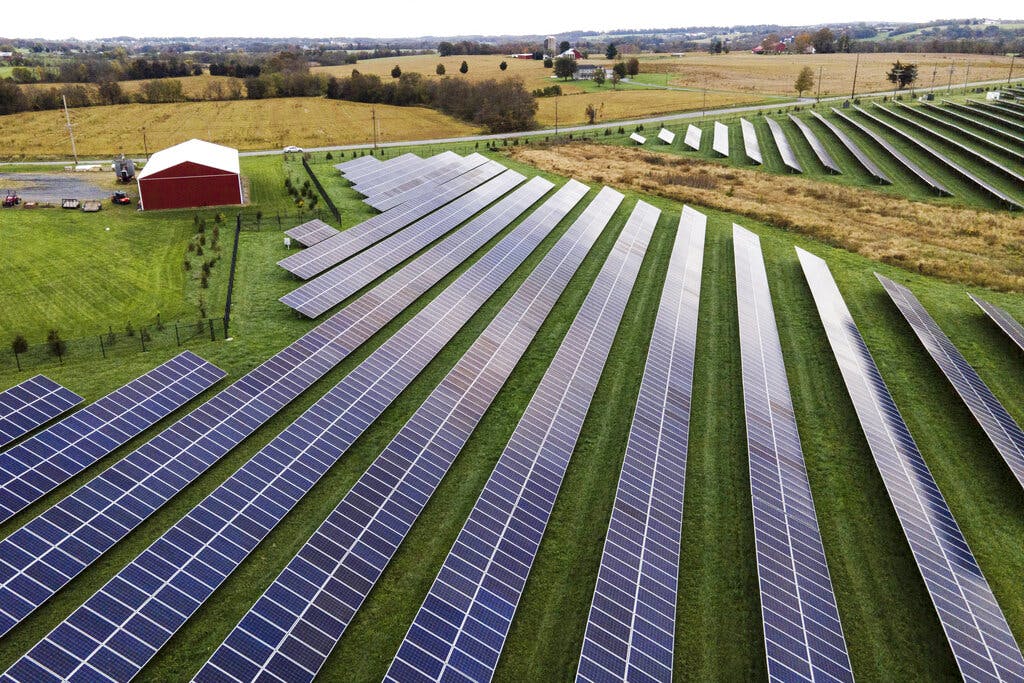Biden Administration Looks To Set Aside Millions of Acres of Public Lands for Massive Solar Panel Farms
Meanwhile, it is discouraging private companies from drilling on public lands.

The same Biden administration that wants to close off federal lands to oil and gas development in the name of protecting the environment is looking to take over 22 million acres of federal land for solar panels as part of the president’s goal of achieving a 100 percent clean electricity grid by 2035.
The Department of the Interior wants 22 million acres of public lands in the American west to be made available for 700,000 acres of solar farms — carving out territory about the size of Maine to produce energy from an area smaller than Rhode Island. The plan seeks to provide “maximum flexibility to reach the nation’s clean energy goals,” turning sprawling Western states into fertile grounds for solar energy development.
“Our public lands are playing a critical role in the clean energy transition,” the director of President Biden’s Bureau of Land Management, Tracy Stone-Manning, said in a statement. While the BLM’s 2012 western solar plan covered the states of Arizona, California, Colorado, Nevada, New Mexico and Utah, the new proposal would expand the territory in question to Idaho, Montana, Oregon, Washington and Wyoming.
Mr. Biden’s “Investing in America” agenda, from which the proposal springs, seems to apply selectively to the energy industry. While urging industries to take up solar projects on public lands, the president has sought to make it more expensive for private companies to drill on them. In June, he proposed raising the royalties that fossil fuel companies pay to extract oil, gas and coal from public lands, the first increase on royalty rates since 1920.
This rate increase, coupled with heightened costs on the bonds companies must pay before drilling, could increase costs by about $1.8 billion between now and 2031, the Interior Department estimates. In September, the Interior Department also drew criticism for its five-year plan to cut offshore oil and gas leasing, which could elevate domestic fuel prices and make America more reliant on oil imports.
The administration’s new plan could face pushback from conservationists who’d prefer solar panels be placed not on public lands but on household rooftops, which are more expensive and difficult to achieve. Environmentalists could also disapprove, as the territory in question is home to federally protected endangered species, like the desert tortoises of the Mojave Desert that have made building solar in the region an obstacle.
The Bureau of Land Management is using $4.3 million in funds from the 2022 Inflation Reduction Act to invest in its updates to the Western solar plan.
Meanwhile, the Bureau is processing 67 projects to onshore clean energy in the form of solar, wind, and geothermal projects, on public lands in the western United States. It has so far approved 47 clean energy projects and permitted 11,236 megawatts of wind, solar and geothermal energy on public lands, which the Biden-Harris administration touts as powering more than 3.5 million homes.

